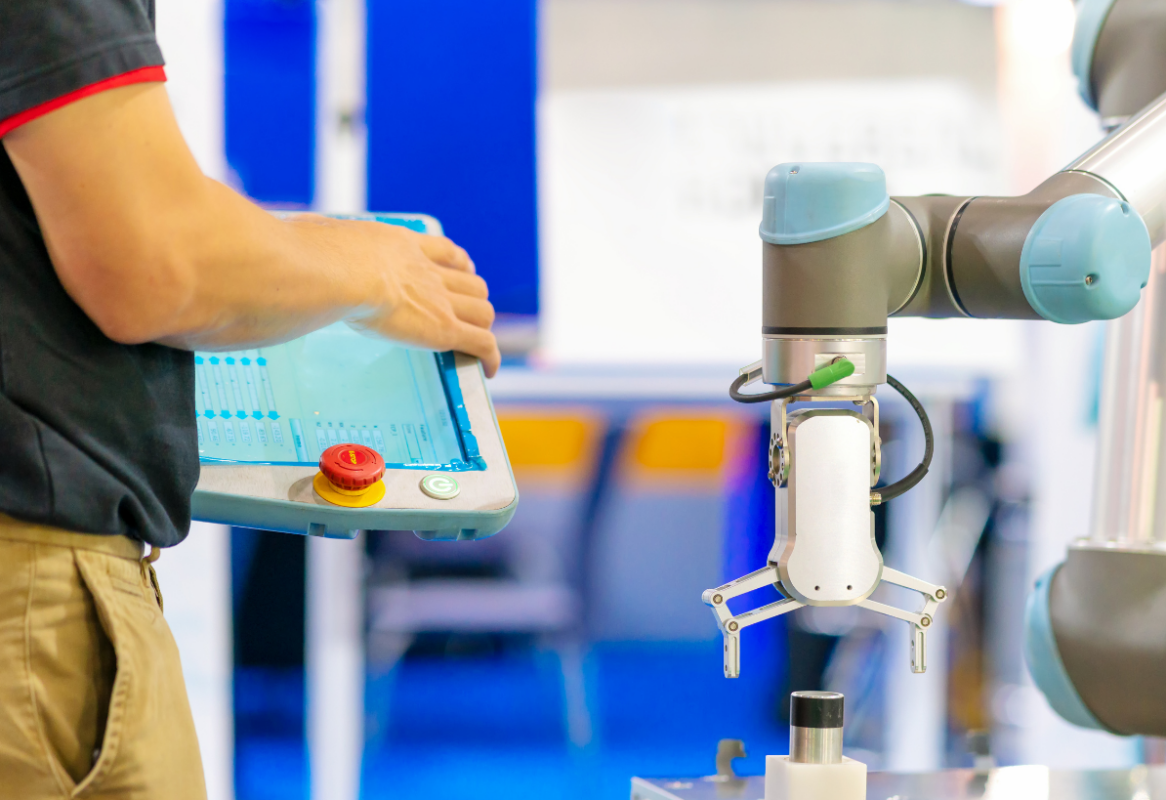Diving into cobots? Great choice! They’re set to make your factory smarter and more flexible, all without the hefty price tag of traditional automation. But, it’s not all smooth sailing. You might hit some snags with operation, safety, and even data security. No worries, though. We’ve got your back with tips and tricks to pick the perfect cobot.
Ready to boost your manufacturing line and tackle those challenges head-on?
Let’s dive in.
What is a Cobot?
A cobot, or collaborative robot, is designed to work safely alongside you, handling tasks like assembly, packing, and inspection. Unlike traditional robots, cobots don’t need safety cages—they’re built to stop or slow down if they sense contact, keeping you safe. They’re lightweight, compact, and easy to program, so you can set them up quickly, even in tight spaces. By taking over repetitive or physically demanding tasks, cobots let you focus on more important work, improving productivity without adding complexity or high costs to your operations.
To go in-depth about what is a cobot, check this article out:
What’s the Difference Between a Cobot and a Robot?
Cobots, or collaborative robots, are made to work safely with you in the same space. They don’t need safety barriers because they have sensors that detect contact and stop if they touch you. You can use cobots for tasks like assembly or packaging, where flexibility and safety are key. They’re easy to program and adjust, so you can quickly switch them to new tasks.
Traditional robots, however, are designed for heavy, repetitive jobs and work much faster and stronger than cobots. These robots need safety cages to keep you safe because they don’t have the same contact-detection features. They’re better for large-scale production but require more setup time and programming. If you’re looking for a solution that fits into your workspace and works alongside you, cobots are the way to go. If you need power and speed for big tasks, robots are the better fit.
This video by MTD CNC explains the key differences between cobots (collaborative robots) and traditional industrial robots, focusing on their applications and features.
Common Challenges:
1. Operational Challenges:
Speed & Payload Limitations:Your cobots aren’t built for speed or heavy lifting. They move safely at around 250mm per second, which keeps them safe around people but might slow them down for some tasks. Also, they’re more about finesse than brute strength, handling lighter loads best. If you need quick or heavy lifting, cobots might not be your go-to.
Consistent Workstation Setup: To get the best out of them, keep their workspace the same. Changing their environment too much means they have to be re-taught their tasks, which takes time and effort. A stable setup means your cobot can do its job efficiently without extra hassle for you. Think of it as setting up a comfortable, unchanging workspace that helps them (and you) work better.
Advice: To keep cobots working well, be adaptable and make small changes in your operations. Be careful about how you organize your workspace and stick to guidelines for the best outcomes.
2. Human Involvement & Supervision:
Cobots Need Help: Cobots can work alone, but they often need people, especially at night when fewer folks are around. Humans are super important for dealing with surprises and making tough choices that cobots might find hard.
Advice: Understand the need for human supervision, and make sure you have enough staff to support cobot operations. Create clear ways for humans and cobots to communicate and work together effectively.
This video by Universal Robots highlights the UR3, a lightweight and flexible collaborative robot designed for light assembly tasks and automated workbench scenarios, emphasizing its adaptability and user-friendly features.
3. Safety Considerations:
Cobots Have Limits: Cobots can’t lift heavy stuff or go really far. They’re good for things between three to ten kilograms, but big robots can handle much heavier loads, up to two tonnes. This makes it tough to use cobots in heavy industries.
Safety Approvals Are Complicated:Making sure cobot workplaces are safe is tricky. It means getting different safety approvals, and that can be complex. If you change what the cobot does or where it works, you might need more permissions. Even though it’s for safety, it can slow things down with extra paperwork.
Advice: To make things smoother, create a virtual model of your workspace to understand risks. By planning and solving problems early, you can reduce safety concerns and speed up the approval process.
4. Privacy & Security:
Ownership of Data:We need to know who owns and keeps safe the data cobots make. It could be the user, the cobot maker, or the software provider. This is super important for keeping your company’s private info safe.
Advice: To keep your data safe, it’s a smart idea to use cobots offline, not linked to the internet. This way, your data stays private and secure, and unauthorized people can’t get to it. If you need internet access, be sure to connect the cobots to a safe local network to protect your important data.
Conclusion:
Wrapping up, choosing cobots is a smart step for your production line. These robots boost your efficiency and adapt easily to your needs, handling tasks smoothly. Sure, you’ll meet some challenges, like setting them up correctly and keeping everyone safe. But, with the right knowledge and attention to detail, you’ll navigate these issues just fine.
The aim? To streamline your operations and make your job simpler. Cobots are your path to staying ahead in the manufacturing game.






